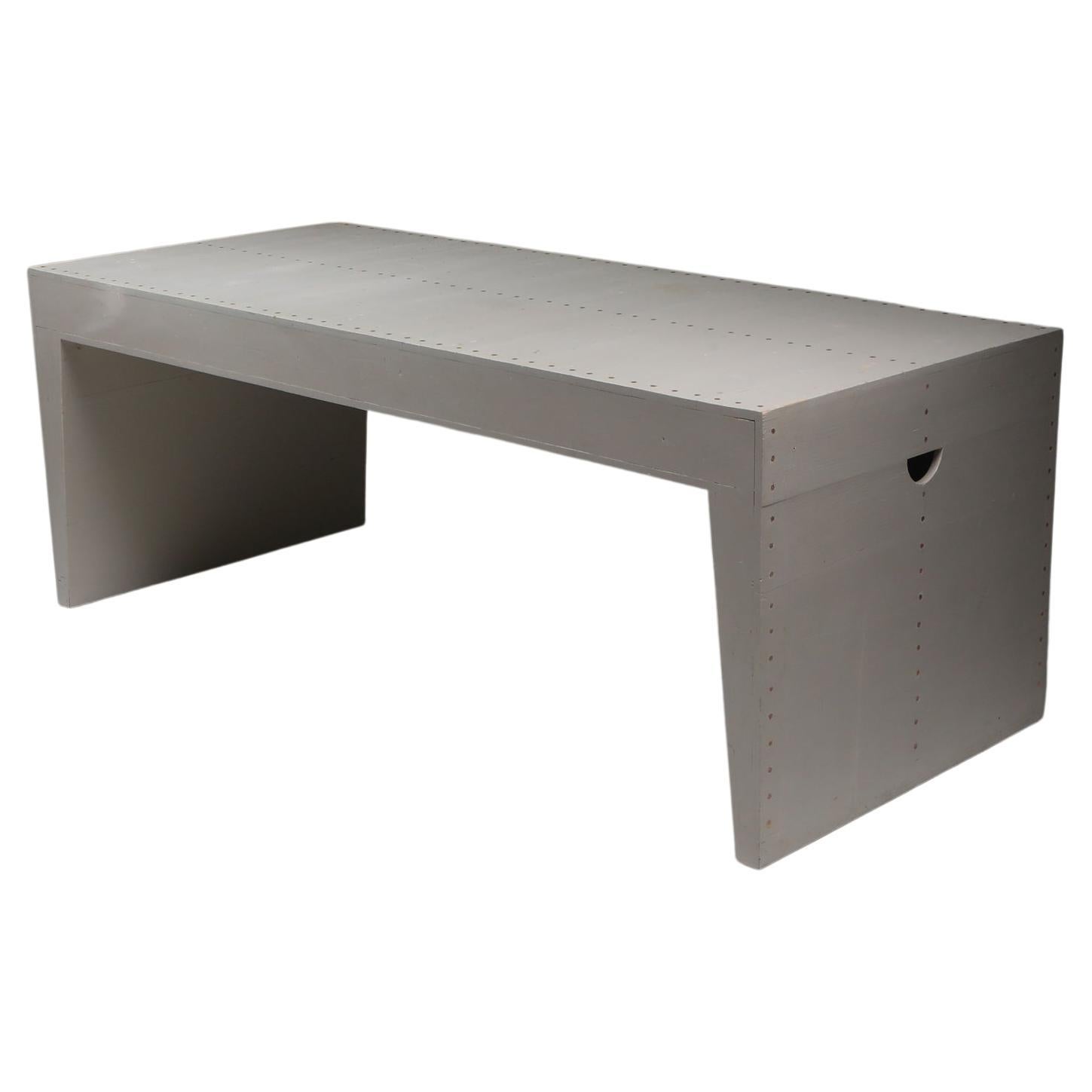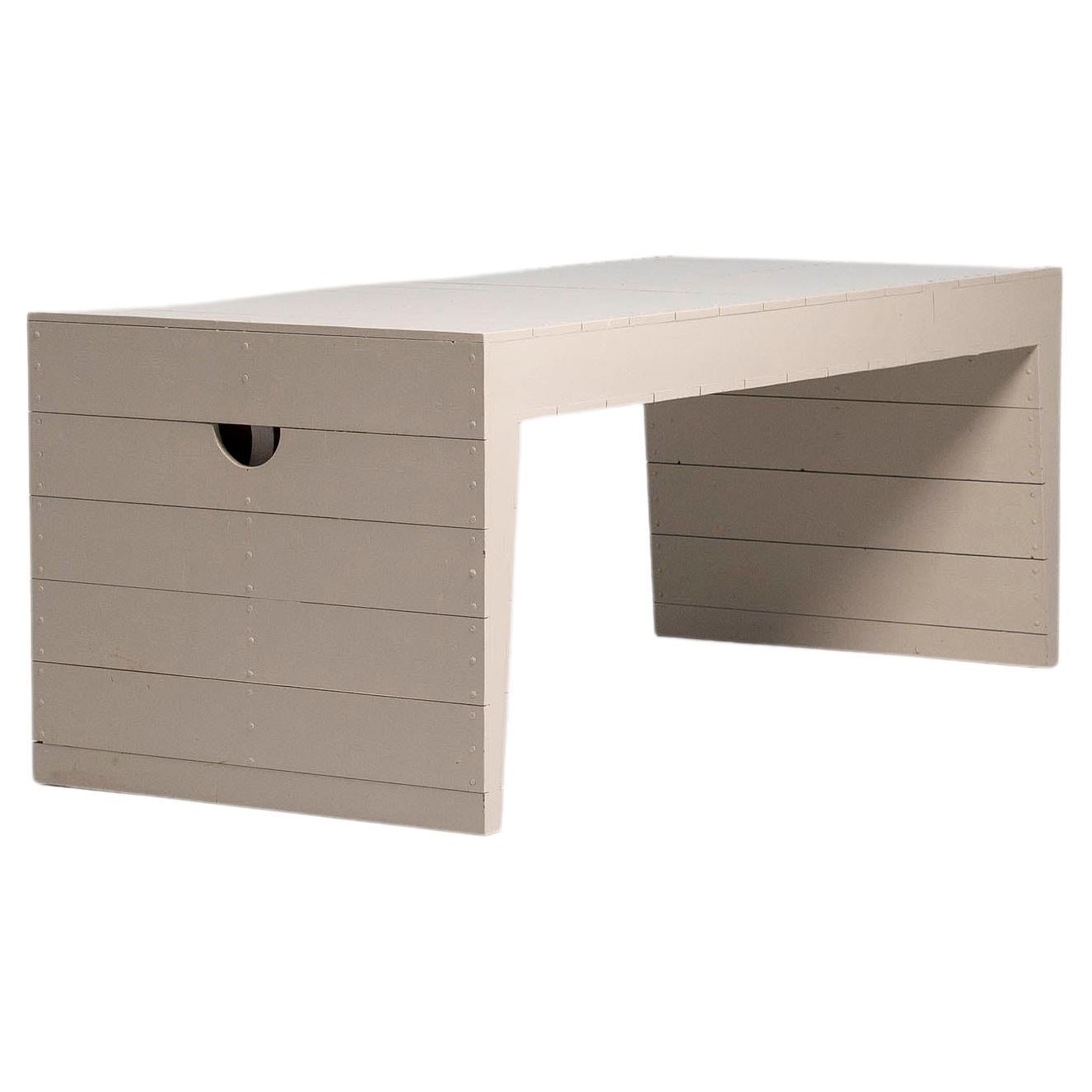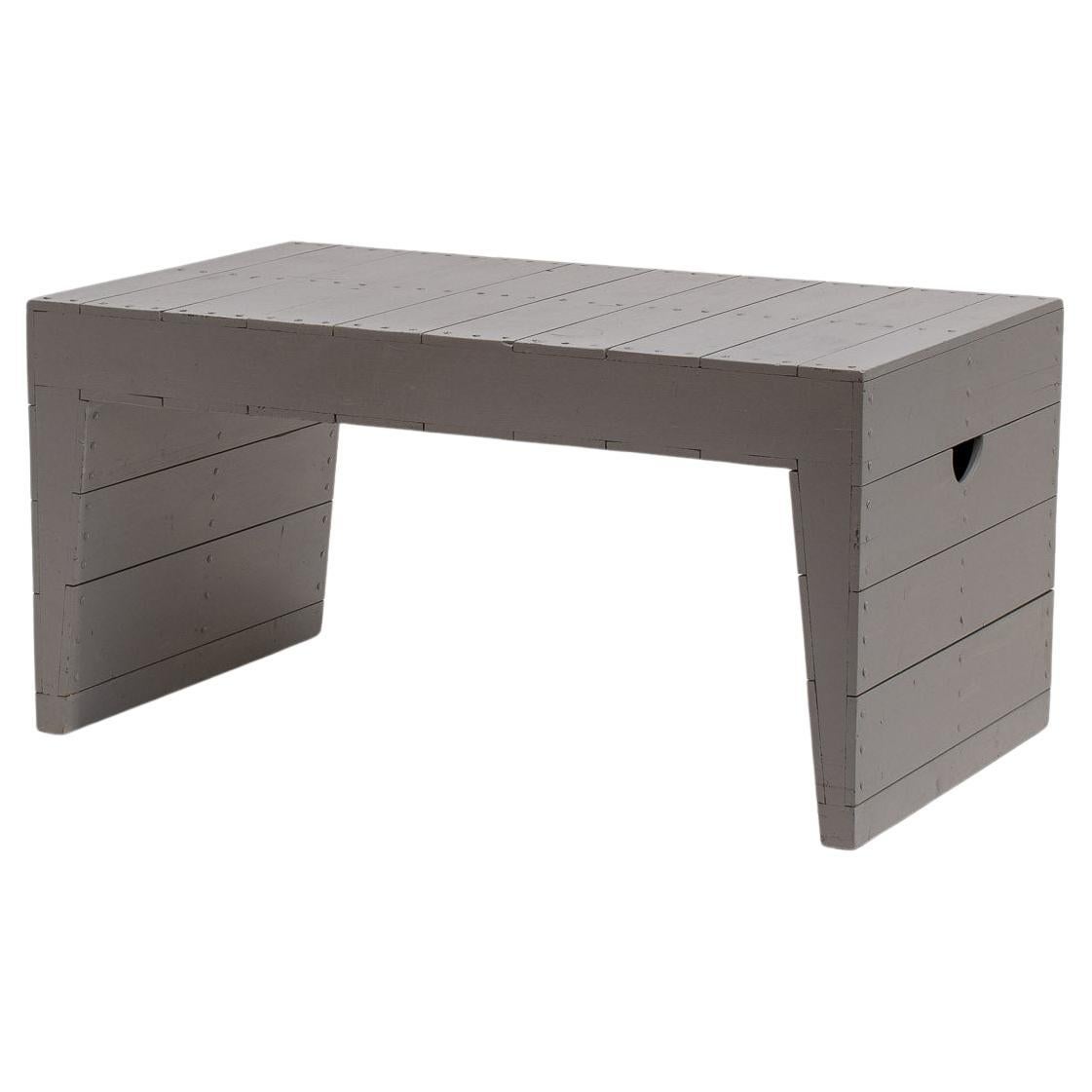Dom Hans Van Der Laan Dining Table in Blue
About the Item
- Creator:Dom Hans van der Laan (Designer)
- Dimensions:Height: 29.53 in (75 cm)Width: 103.94 in (264 cm)Depth: 44.89 in (114 cm)
- Style:Mid-Century Modern (Of the Period)
- Materials and Techniques:
- Place of Origin:
- Period:1980-1989
- Date of Manufacture:1980s
- Condition:Wear consistent with age and use. Every item Morentz offers is checked by our team of 30 craftsmen in our in-house workshop. Special restoration or reupholstery requests can be done. Check ‘About the item’ or ask our design specialists for detailed information on the condition.
- Seller Location:Waalwijk, NL
- Reference Number:

Established in 2006, Morentz has a team of approximately 55 restorers, upholsterers, interior advisers and art historians, making it a gallery, workshop and upholstery studio, all in one. Every day, a carefully selected array of 20th-century furniture arrives from all over the world at the firm’s warehouse, where the team thoroughly examines each piece to determine what, if any, work needs to be done. Whether that means new upholstery or a complete restoration, Morentz's aim is always to honor the designer’s intention while fulfilling the wishes of the client. The team is up to any challenge, from restoring a single piece to its original glory to furnishing a large-scale hotel project.
- ShippingRetrieving quote...Ships From: Waalwijk, Netherlands
- Return PolicyA return for this item may be initiated within 10 days of delivery.
- Biosca Dining Table in Stained PineBy BIOSCALocated in Waalwijk, NLBiosca, dining table, stained pine, Spain, 1960s Outstanding Spanish dining table that is executed by Biosca in an architectural way. The two bases feature a geometrical carved patt...Category
Vintage 1960s Spanish Mid-Century Modern Dining Room Tables
MaterialsPine
- Giuseppe Rivadoss Dining Table in PineBy Giuseppe RivadossiLocated in Waalwijk, NLGiuseppe Rivadossi, dining table, pine, Italy, 1970s. In the world of great design, this table made by Giuseppe Rivadossi emerges as an exemplar of bespoke craftsmanship, crafted fo...Category
Vintage 1970s Italian Mid-Century Modern Dining Room Tables
MaterialsPine
- Danish Dining Table in OakLocated in Waalwijk, NLDining table, oak, Denmark, 1960s Beautiful simplistic dining table made in Denmark in the 1960s. This Danish dining table features a long, rectangular top executed in oak. The war...Category
Vintage 1960s Danish Scandinavian Modern Tables
MaterialsOak
- Italian Round Dining Table in Carrara MarbleLocated in Waalwijk, NLRound dining table, white Carrara marble, Italy, 1960s Hailing from Italy during the vibrant 1960s, this round dining table crafted from exquisite white Carrara marble epitomizes the artistry and innovation of postmodern design. Its sleek silhouette is a testament to the skilled craftsmanship of the era. Supported by a single solid marble pedestal...Category
Vintage 1960s Italian Mid-Century Modern Dining Room Tables
MaterialsCarrara Marble
- Guillerme & Chambron 'Victorine' Dining Table in OakBy Guillerme et Chambron, Votre MaisonLocated in Waalwijk, NLGuillerme et Chambron for Votre Maison, dining table model 'Victorine', oak, France, 1960s This wonderful table shows great craftsmanship and a strong appearance, that clearly chara...Category
Vintage 1960s French Mid-Century Modern Dining Room Tables
MaterialsOak
- Martin Visser Round Dining Table in WengéBy Martin VisserLocated in Waalwijk, NLMartin Visser for 't Spectrum, dining table, wengé, stained wood, The Netherlands, 1960s Beautiful wengé dining table designed by Martin Visser in the 1960s. With its round top, div...Category
Vintage 1960s Dutch Mid-Century Modern Dining Room Tables
MaterialsWood, Wenge
- Bossche School Table Dom Hans van der Laan, Jan de JongBy Jan de Jong, Dom Hans van der LaanLocated in Antwerp, BEBossche school table Dom Hans van der Laan, Jan de Jong Table in Bossche School style designed by Dom Hans van der Laan and his apprentice Jan De Jong i...Category
Vintage 1960s Dutch Mid-Century Modern Tables
MaterialsPine
- Jan de Jong Dining Table Bossche School Holland 1970 Dom Hans van der LaanBy Jan de Jong, Dom Hans van der LaanLocated in Roosendaal, Noord BrabantRare and very collectable example of the "Bossche school" furniture by architect Jan de Jong . Together with Dom Hans van der Laan, de Jong who started out as Dom Hans' student, stoo...Category
Vintage 1970s Dutch Mid-Century Modern Dining Room Tables
MaterialsIron
- Dom Hans van der Laan Coffee TableBy Dom Hans van der LaanLocated in Antwerp, BEDom Hans van der Laan coffee table, The Netherlands, 1960s. Executed by Jan de Jong During the reconstruction period after WWII, the Dutch architect Jan de Jong and Dom Hans van...Category
Mid-20th Century European Mid-Century Modern Coffee and Cocktail Tables
MaterialsCopper
- Rare Dom Hans van der Laan Desk, the NetherlandsBy Dom Hans van der LaanLocated in Antwerp, BEDom Hans van der Laan Bossche School office desk , the Netherlands Very rare and highly collectible piece by renowned Dutch designer, architect and monk Dom Hans van der Laan. Made ...Category
Mid-20th Century Dutch Mid-Century Modern Desks
MaterialsWood, Pine
- Rare Dom Hans van der Laan Working Table, Netherlands, 1970By Dom Hans van der LaanLocated in Amsterdam, NLA rare working table designed by Dom Hans van der Laan in the Netherlands in the 1970s. It’s eye-catching, minimalist design is highly recognizable and the Bossche School style that is was designed in, is part of mid-century Dutch design history. The table is made of wood, crafted in a most recognizable style. It has a green laminated wooden top and is finished with copper nails, all adding fantasticly to it’s style! It comes from a doctor’s practice in the Dutch town Sint-Michielsgestel. The building was designed in the Bossche School style by Vermeulen architect’s office in Veldhoven, the Netherlands. We have the original architect’s drawings...Category
Vintage 1970s Dutch Tables
MaterialsWood
- Dom Hans van der Laan Console or Side Table, the Netherlands 1960sBy Dom Hans van der LaanLocated in Antwerp, BEBossche School console or side table by Dom Hans van der Laan, the Netherlands 1960s Rare and collectible piece by renowned Dutch designer, architect and monk Dom Hans van der Laan....Category
Vintage 1960s Dutch Mid-Century Modern Side Tables
MaterialsWood, Pine





